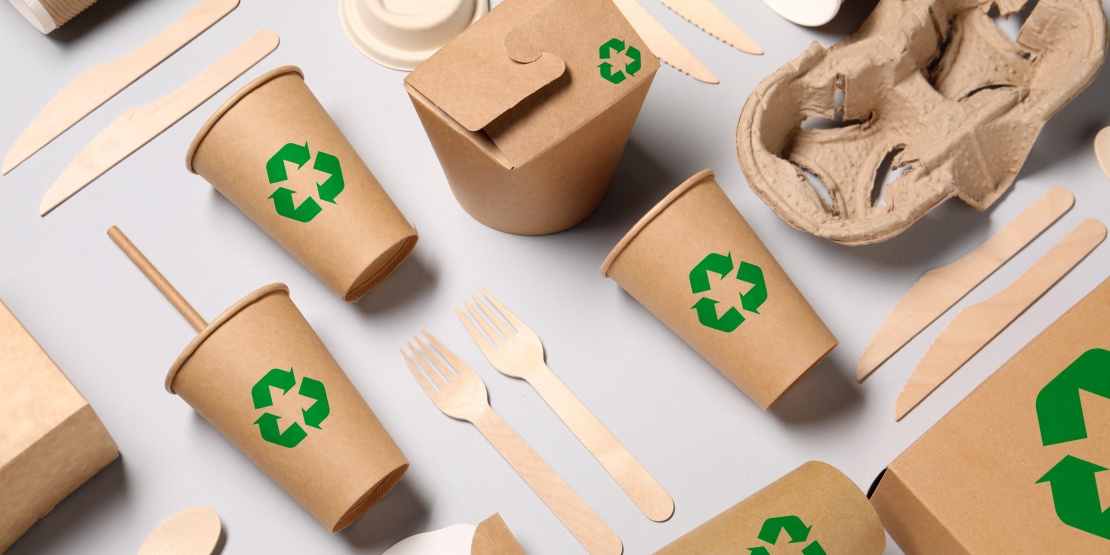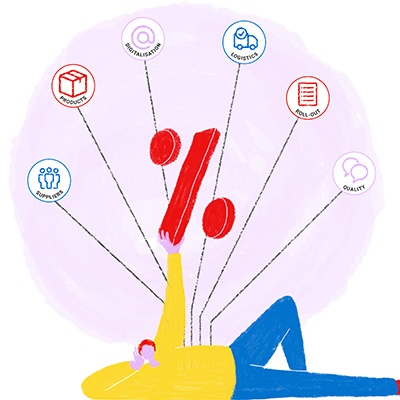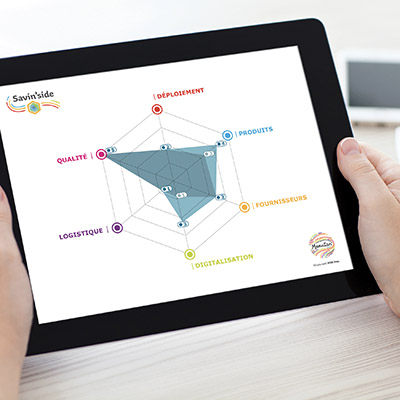Plastic is now everywhere. Predominantly manufactured from fossil fuels, this material permeates our daily lives, even finding its way into our water and food. Faced with the ecological and health challenges this represents, regulations are intensifying worldwide. The major priority is reducing single-use plastics, which constitute a genuine scourge. In this approach, companies have a key role to play, with the procurement function leading the charge.
Tightening regulations for plastic
There are more and more policies aimed at reducing the impact of plastic materials across the world.
Focus on the European Union
Within the EU, the single-use plastics directive has paved the way for a set of restrictions. As a result, for several years now, the following have been banned:
- Disposable cutlery;
- Tableware;
- Straws;
- Stirrers;
- Cotton bud sticks;
- Balloon sticks;
- Takeaway cups;
- Fast food packaging;
- Disposable food containers made of expanded polystyrene.
The directive also progressively imposes separate sorting, as well as a proportion of recycled plastic in the composition of single-use bottles. Not to mention the imposition of mandatory marking to aid recycling.
To date, a draft regulation on packaging plans to go even further. Certain types of single-use plastic packaging are thus set to be prohibited. These include, for example:
- Individual portion packaging;
- Miniature packaging for toiletries;
- Very lightweight plastic bags;
- Etc.
The 2025 plastic law
In France, the 2025 plastic law is part of this global dynamic. It echoes a whole series of measures aimed at reducing the use of single-use plastics.
Its three key points are:
- The progressive ban on plastic food containers for cooking, reheating and serving in collective catering, particularly in schools and certain health establishments;
- A key objective: Achieving 100% recycling of single-use plastic packaging;
- The end of placing single-use plastic packaging on the market.
Beyond France and Europe, these types of initiatives can be found worldwide. For plastic bags, for example, restrictions extend from China to Rwanda, via Indonesia. Meanwhile, the United Nations Assembly for the Environment had adopted a historic resolution to negotiate a global treaty to combat plastic pollution. Today, negotiations continue…
The priority: Reducing single-use plastics
Currently, plastic production and consumption are constantly growing. It has even quadrupled over the last 30 years[1]. This phenomenon is causing a serious ecological and health crisis. Throughout its life cycle, plastic generates greenhouse gas emissions, pollution and serious health problems.
First of all, plastic is not biodegradable in the natural environment. It breaks down into "microplastics" which attract toxic chemicals, are ingested by wildlife and subsequently end up in our food chain. Moreover, plastic has a low collection and recycling rate. And for good reason, most plastics are not infinitely recyclable like other materials (glass, for example). They are rather "downcycled", i.e. transformed into lower quality products that are ultimately no longer recyclable. Globally, only 9% of plastics are recycled1.
All these elements highlight the importance of reducing the problem at source. This begins with the reduction of single-use plastics. You know, those products that are partially or entirely made from plastic and designed to be used only once or for short-term use, before being disposed of. This takes the form of bags, packaging, bottles, cups, boxes, films, tableware… All these items alone represent 50% of global plastic production[2]! Thus, it’s a major source of material waste.
Beyond environmental and regulatory challenges, reducing single-use plastics also responds to growing consumer demand. Customers, whether individuals or professionals, increasingly favour companies that engage in sustainable approaches. Not adapting quickly to these new expectations represents a commercial risk. Conversely, companies that take the lead strengthen their attractiveness and retain customers concerned with environmental issues.
Which procurement levers to activate for adaptation?
Faced with the multiplication of these regulations and this collective awareness, companies must get themselves in order. In this dynamic, procurement departments have a key role to play in reducing as much as possible the purchase of single-use plastic items.
2. Rethinking needs
For most of these products, buyers will be able to rework the specifications, in collaboration with the business teams. The objective: Replacing single-use plastic products with sustainable solutions.
Here are some examples, in order of priority:
- Reusable products, such as a mug that could replace a disposable cup;
- Products from a sustainable and renewable source like paper;
- Products from an abundant source, such as glass or metal;
- Products made from the best available plastic, i.e. made from recycled materials, which are fully recyclable or which are bioplastics.
3. Optimising the supply chain
Beyond the ecological challenge, reducing single-use plastics represents an opportunity for logistical and financial optimisation. By reducing dependence on fossil plastics, companies can stabilise their costs and anticipate fluctuations in raw materials.
Using reusable packaging also allows for reducing purchase volumes and storage costs. Furthermore, lighter, more compact and sustainable alternatives facilitate the management of logistics flows and reduce the carbon footprint related to transport.
Lastly, companies can rationalise their procurement by favouring short circuits and working with suppliers who offer innovative solutions that comply with new regulations.
4. Exploring the market
To find the best option, it is essential to sound out the market and engage in conversation with suppliers to identify the latest innovations. Today, many companies are innovating in the plastic market with 100% edible cutlery, kraft paper adhesive tape, packaging made from mycelium - the vegetative part of mushrooms…
This is what Emmanuelle Perdrix, president of the Hyleance group[4], emphasises: "Plastic bashing also represents an innovation opportunity for companies in the sector, it’s a driver for reflection. For us, this innovation could involve the use of recycled or bio-sourced material or a new usage, with cutlery placed in a pouch for reuse. An alternative would be to offer our customers to recover the product at the end of its life for recycling."
5. Training teams
It is essential to raise awareness among procurement teams and prescribers on the subject. This involves setting up training sessions but also establishing environmental charters. It is possible, for example, to organise a Climate Fresco. This fun and educational workshop mobilises collective intelligence to raise awareness among participants about climate change. It’s an opportunity to place ecological issues at the heart of exchanges and to demonstrate actionable good practices that professionals can adopt.[NE1]
All these requirements aim to promote a circular economy, where the reuse of materials and the repair of products are prioritised. Companies have every interest in taking this strategic shift [NE2] to meet customer expectations, strengthen their brand image and ensure sustainable growth.
[3] Marline, WEBER (Responsible for sustainable procurement policy and territorial cohesion, Ministry of Ecological Transition), Le débat, SMART @WORK, 15 June 2024, 28 min, B-Smart, [https://www.bsmart.fr/video/24630-smart-work-15-juin-2024]
[4] Emmanuelle, PERDRIX (President of the Hyleance group), Décision Achats, 28 August 2019, [https://www.decision-achats.fr/Thematique/fournisseurs-1235/Breves/plastique-eteint-idees-eveillent-341580/all.htm]









